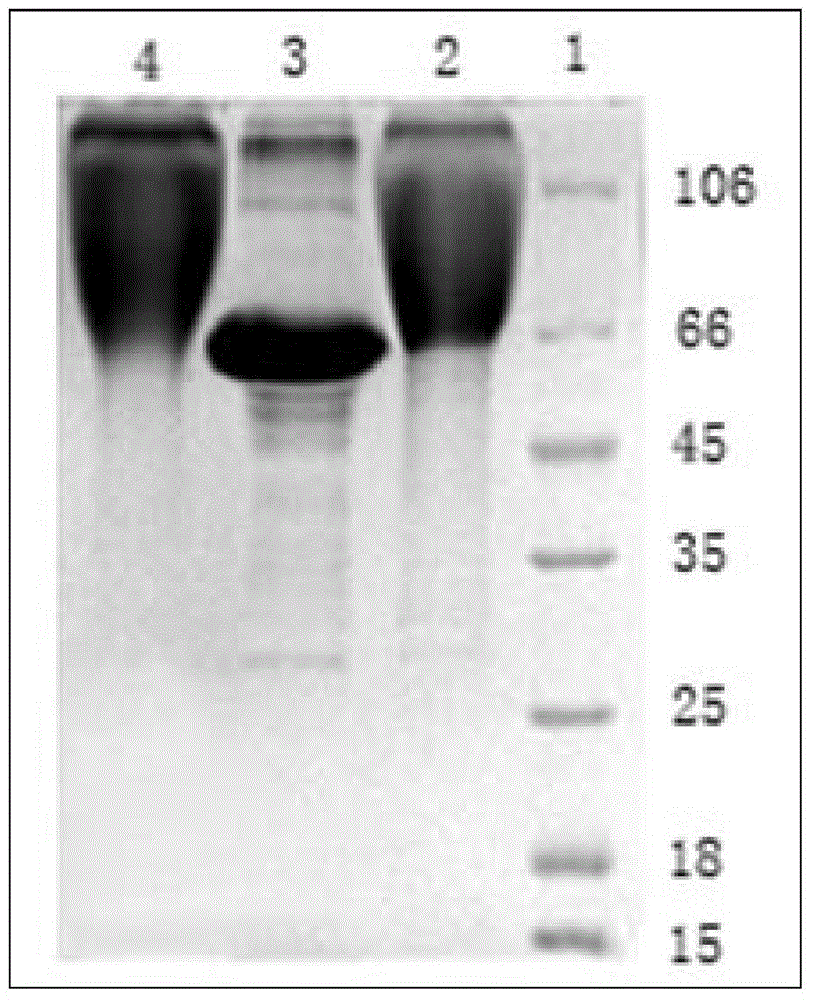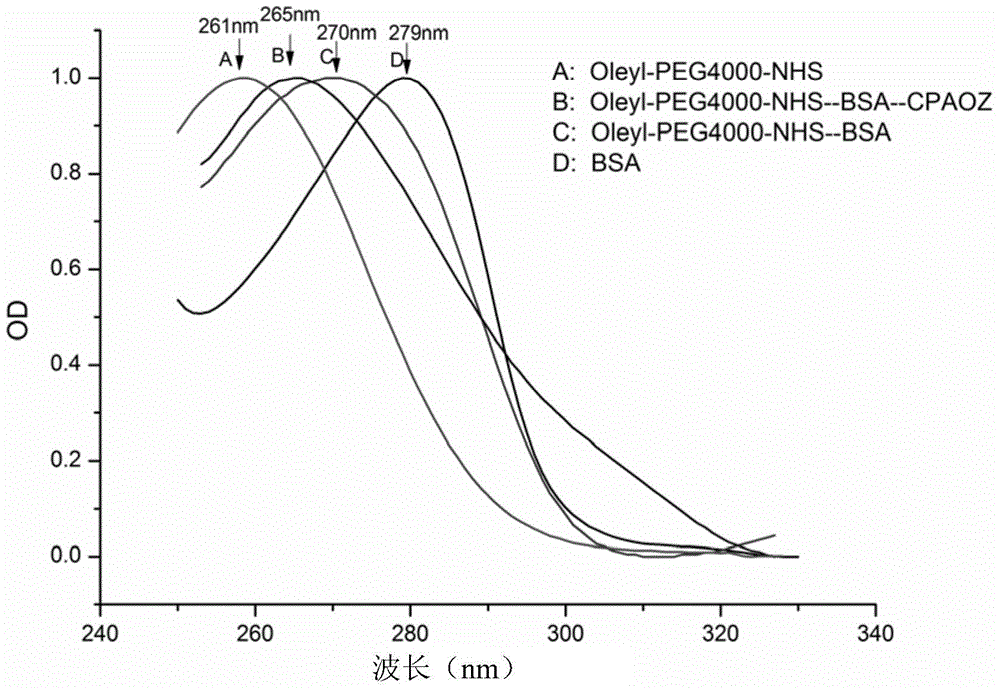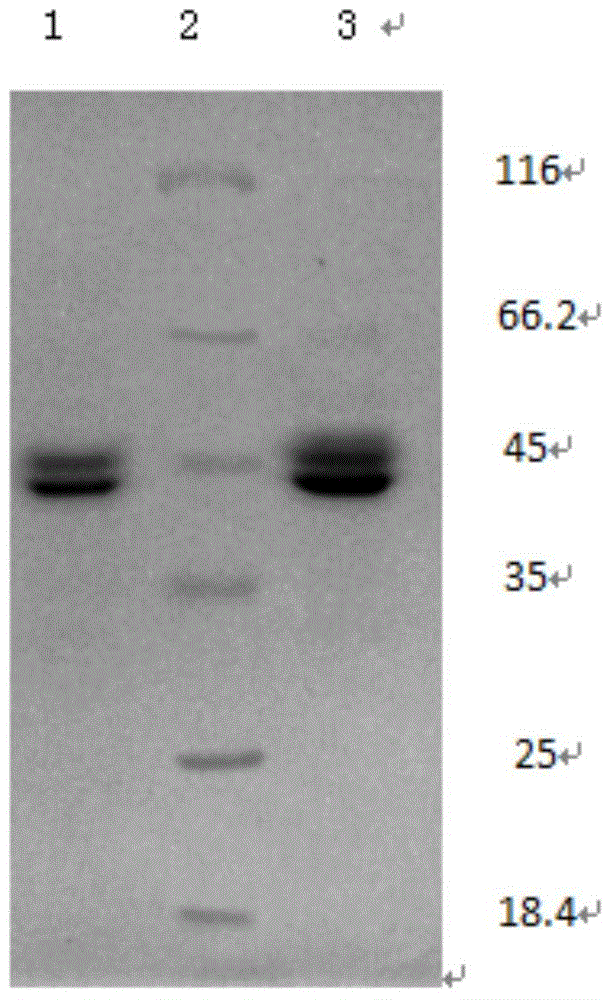Method for screening hybridoma cells secreting specific monoclonal antibodies, and application thereof
A hybridoma cell and monoclonal antibody technology, applied in the field of immunological detection, can solve the problems of time-consuming and labor-intensive, inability to evaluate, and missed selection of strong positive cells, so as to reduce the number of cloning, shorten the screening time, and shorten the The effect of filter time
- Summary
- Abstract
- Description
- Claims
- Application Information
AI Technical Summary
Problems solved by technology
Method used
Image
Examples
Embodiment 1
[0033] (1) Coupling and identification of Oleyl-PEG4000-NHS with antigen
[0034] 1) Coupling of Oleyl-PEG4000-NHS and BSA
[0035] Weigh 33mg of BSA, dissolve in 3.3mL of 15mM, pH 7.4 PBS (the PBS used below is the same as here), and stir evenly with a stirrer to obtain a BSA solution. Next, 10 mg of Oleyl-PEG4000-NHS (purchased from Japan NF Company) was weighed and dissolved in 1 mL of PBS to obtain an Oleyl-PEG4000-NHS solution. The Oleyl-PEG4000-NHS solution was slowly added to the stirred BSA solution, and stirred at room temperature for 3 hours to obtain the Oleyl-PEG4000-NHS-BSA solution.
[0036] 2) Coupling of Oleyl-PEG4000-NHS-BSA and CPAOZ
[0037] ① Take 500μl of Oleyl-PEG4000-NHS-BSA solution, add it to 500μl of PBS, and put it in an ice box to stir.
[0038]②The derived CPAOZ (according to the literature "Zhou Kenan et al. Preparation of monoclonal antibody to furazolidone metabolite and its new immunochromatographic detection test strip [J]. Chinese Journal ...
Embodiment 2
[0053] (1) Coupling and identification of Oleyl-PEG4000-NHS with antigen
[0054] 1) Coupling of Oleyl-PEG4000-NHS and CKMB
[0055] Weigh 10mg Oleyl-PEG4000-NHS and dissolve it in 1ml PBS, dilute to 1mg / ml with PBS to get 1mg / ml Oleyl-PEG4000-NHS solution; then take 500μl 1mg / ml Oleyl-PEG4000-NHS into the bottle and put it in the ice box After stirring, take 500 μl of 1 mg / ml CKMB antigen and slowly add it to the above solution and stir overnight. After 12 hours, ultrafilter with a 30KD ultrafiltration tube to obtain Oleyl-PEG4000-NHS-CKMB solution. Then perform filter sterilization and store at 4°C.
[0056] 2) Identification of Oleyl-PEG4000-NHS-CKMB
[0057] With embodiment 1. Result: SDS-PAGE electrophoresis (such as image 3 shown) and UV-visible spectroscopic scanning identification (such as Figure 4 shown) showed that Oleyl-PEG4000-NHS-CKMB was obtained.
[0058] (2) Screening of Creatine Kinase Isozyme MB (CKMB) Hybridoma Cell Clusters
[0059] Before the cell...
PUM
 Login to View More
Login to View More Abstract
Description
Claims
Application Information
 Login to View More
Login to View More - R&D
- Intellectual Property
- Life Sciences
- Materials
- Tech Scout
- Unparalleled Data Quality
- Higher Quality Content
- 60% Fewer Hallucinations
Browse by: Latest US Patents, China's latest patents, Technical Efficacy Thesaurus, Application Domain, Technology Topic, Popular Technical Reports.
© 2025 PatSnap. All rights reserved.Legal|Privacy policy|Modern Slavery Act Transparency Statement|Sitemap|About US| Contact US: help@patsnap.com



